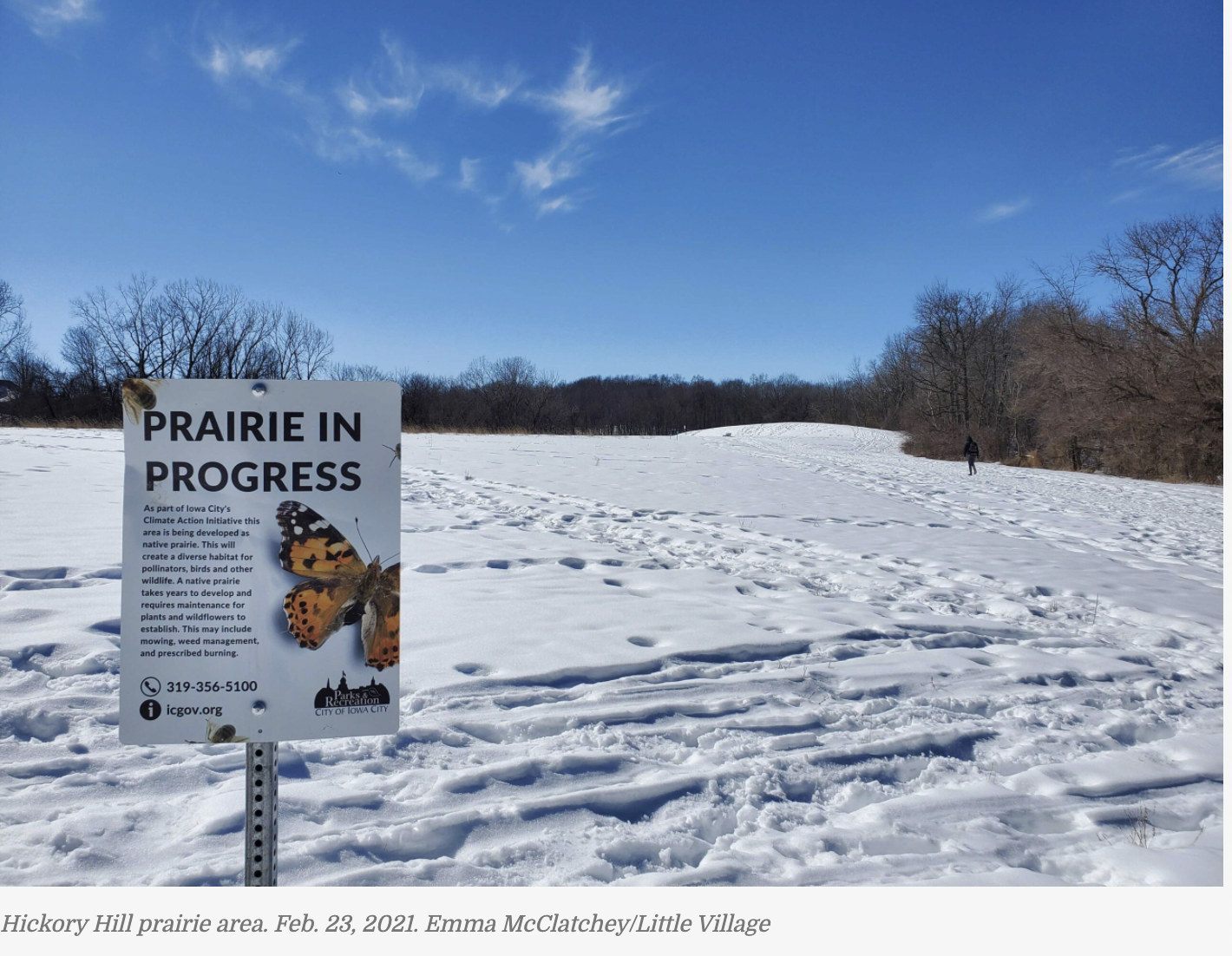MYCYOWA, 2022
MYCYOWA is a STEAM-themed traveling public art project, supported by an American Rescue Plan grant through the Iowa Department of Cultural Affairs.
The goal of MYCYOWA is to increase awareness of mycoremediation, a process in which fungi break down and absorb pollutants on land and in fresh water: heavy metals, textile dyes, tanning chemicals, wastewater, petroleum, hydrocarbons, pesticides and herbicides. If you’re new to the remedial capabilities of mushrooms, check this out: Oyster mushrooms helped clean up after California’s wildfires. Why is it so hard to make a business case for “mycoremediation?” by Renée Alexander, or Mycologist Tradd Cotter’s method for composting old clothes with oyster mushrooms.
Resources will be used to fabricate a set of three compostable, weather-proof bilingual trail signs, to be installed in various locations across the state. Each sign will feature original poem on the theme of mycoremediation, spoken in the collective voice of mycelium, similar to a Greek chorus. To echo fungi's surprising vitality across diverse ecosystems, our goal is to install the signs in different landscapes across the state throughout 2022—from urban neighborhoods, local art festivals, and small town main streets to state parks, college campuses, municipal buildings, and hospital systems.
Each sign will include a QR code to connect viewers to the MYCYOWA website with information on the project (such as upcoming installations), resources on mycoremediation, and links to social media to foster interaction among viewers and beyond.
The signs will be fabricated using weather-proof, myco-compostable materials. Bases will be weighted but portable with effort to prevent theft and/or damage and designed to remain upright on any surface, like Weebles. Sign design and fabrication by Collin and Denny Switzer.
GET THE MYCO-SCOOP
Would you like to stay informed about the project, or host the signs when they’re ready to travel in 2022? Fill out the form below.
American Rescue Plan Grants
In total, 236 individuals and organizations – representing 70 communities across 56 Iowa counties – will benefit from $1,527,814 in one-time grant funding, made possible through the agency’s state/federal partnerships with Arts Midwest, the National Endowment for the Arts and the National Endowment for the Humanities with federal funds through the American Rescue Plan Act.
The department received more than $4.1 million in requests to help support a portion of about 1,600 arts jobs.
The list of grant recipients includes individual artists, cultural centers, museums, local government and community groups, arts organizations, public libraries, historical societies, community theaters, media production organizations and more.
“It’s encouraging to see the return of the arts and culture sector, part of the broader tourism industry working to rebound after a challenging year,” Iowa Department of Cultural Affairs Director Chris Kramer said. “We’re proud to be able to award these grants through our agency’s state/federal partnerships.”
“These recovery grants represent a significant investment in Iowa’s creative workforce,” Iowa Arts Council Administrator David Schmitz said. “In addition to the grants awarded directly to artists, many arts organizations received support to hire or bring back artistic personnel, many of whom lost jobs, gigs and income during the pandemic.”
Iowa Bird of Mouth, 2016-17
Iowa Bird of Mouth (IBOM) was an online crowd-sourced poetry project honoring Iowa birds. The project ran from September 2016 through August 2017. Support was provided by the Iowa Arts Council, a division of the Iowa Department of Cultural Affairs, and the National Endowment for the Arts.
We sought the words and stories of bird lovers, bird watchers, writers, artists, musicians, teachers, students, scientists, non-profits, federal and state organizations, environmental stewards, and nature lovers from around the world—regardless of age, education, publication history, location or writing style.
Every month, the spotlight bird changed.
September: American Goldfinch
October: Ring-necked Pheasant
November: American Crow
December: Eastern Screech-Owl
January: Bald Eagle
February: Northern Cardinal
March: Red-winged Blackbird
April: Trumpeter Swan
May: American Robin
June: Eastern Bluebird
July: Eastern Meadowlark
August: Great Blue Heron
Contributors connected, chatted and shared photos, art and sound files on IBOM’s now defunct Facebook, Instagram, and Twitter feeds.
Text in the poems is STILL open source and available to visual artists, musicians, other writers, organizations, etc. for use in creative projects. Click here for use.
The IBOM Team
Tyler Harms of Iowa Department of Natural Resources and Executive Director of Iowa Young Birders acted as IBOM’s ornithological advisor. IBOM's logo was based on original drawings by 2015 Iowa Arts Council fellow Kathranne Knight. Vaughan Ashlie Fielder, founder of The Field Office, designed and developed the IBOM website.
Goal
The goal of IBOM was to increase our sense of collective connection to the environment. Birds occupy a unique space in our collective consciousness—they live in all our communities, grabbing our eyes and ears. By sharing our words, we can celebrate ways in which our stories and communities divide and converge, like a flock in flight.
Thirty-seven percent of North American bird species are of high conservation concern and at risk of extinction without significant conservation action, according to the State of North America’s Birds report released in June 2016 by the North American Bird Conservation Initiative. IBOM hopes that honoring wild birds will unite us as conservationists.
Crowdsourced Poetry
To borrow a line from Walt Whitman, crowdsourced poems “contain multitudes.” In a crowdsourced poem, anyone can contribute their words. The technique offers a great opportunity to expand definitions of community and engagement. U.S. Poet Laureate Juan Felipe Herrera hosted an epic crowdsourced poem, “La Familia,” on the Library of Congress’ website.

